
Daniel Blaufuks, Terezín, book cover, Steidl, 2010
In a post about W.G. Sebald’s use of pictures, I reproduced a spread from his novel Austerlitz, showing a room with a grid of shelves from floor to ceiling — the records room at the Terezín concentration camp, the so-called Small Fortress, located about an hour from Prague. I was sure I had encountered the picture somewhere else, but the source didn’t spring to mind and the immediate focus of my essay lay elsewhere so I didn’t pursue it.
A couple of weeks ago, I happened to see Daniel Blaufuks’ book Terezín, which was published last year, and there on the cover was a color photograph of the same room. Leafing through, I found that Blaufuks, a Portuguese photographer and artist, was haunted by the picture, which had become the starting point for a multilayered work of image, text and video suffused with its own Sebaldian melancholy. Blaufuks imagines Melville’s Bartleby entering the room and declaiming his famous protest: “I would prefer not to.” He considered writing to Sebald or his editor about the picture, but never did so (Sebald died in 2001).
In the novel, Sebald has the eponymous Austerlitz claim to have come across a large-format photograph of the shelf-lined room in an American architectural magazine (sadly unspecified) and he is quite clear that this image documents the place “where the files on the prisoners in the little fortress of Terezín, as it is called, are kept today.” Austerlitz regrets that he didn’t visit the Small Fortress to pursue his investigations when he had the chance. One then turns the page to discover the picture.
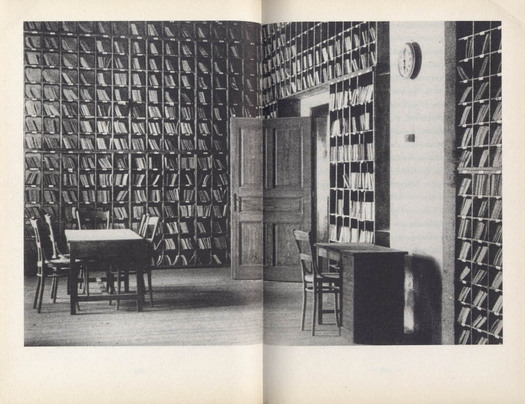
W.G. Sebald, Austerlitz, Penguin, 2002
The black-and-white photograph is grainy and degraded, making it look like it might even date from the Second World War, and there is no credit of any kind in my UK edition. But it is unwise with Sebald to take anything for granted and his habit of photocopying his source material to roughen it up could easily have created this effect. In his book, Blaufuks wonders whether, “this was a real space or a staged one, an old photograph, which Sebald had found in some archive or one he himself had taken.” It was to answer this kind of question in relation to the Antikos Bazar that I had undertaken my own trip to Terezín in 2004. Blaufuks shows the spread in his book, though he is working from a different edition, where the picture is awkwardly broken into two panels across the inside margins.
In 2007, Blaufuks’ obsession also takes him to Terezín — to the Small Fortress, where he quickly finds the room. But it isn’t possible to enter the building through the doorway that says Geschäftszimmer (office) and he peers through the window from the courtyard, from the same angle that he decides Sebald must also have seen the room, “as this was the exact point of view of the photograph in his book” — this is to assume, of course, that Sebald took the picture. Then, turning the page, one finds Blaufuk’s color photograph of the room, looking just as much like a stage set waiting for someone to enter as the empty room in Sebald’s novel, except that the furniture has changed, there are fewer files more precisely organized in their cubbyholes, and Blaufuk has omitted the clock with its hands set exactly at six o’clock. Oddly, for someone who has studied the room so closely, he cannot remember whether the clock was still there at the time of his visit. If he took this picture from the courtyard through the bars and the windowpane, as he implies he did, the results are spectacularly good.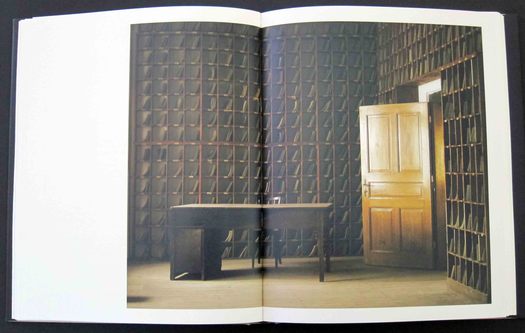
Daniel Blaufuks, Terezín, 2010
I should add that although I paid a brief visit to the Small Fortress at the end of my day in the town, I wasn’t looking for this unenterable chamber and I didn’t see it through the window, though I have my own Sebaldian regrets about that now. But I have no doubt that the room exists, as this (clockless) picture on a Czech news website confirms; and what a demystifying shot it is — the impact of both the Sebald image and Blaufuks’ picture depends on the grid of shelves filling the picture frame as if these infernal records go on forever, detailing with a cold bureaucratic formality completely at odds with the murderous truth, the passage and elimination of so many lives. In the news photo, which shows the same arrangement as Blaufuks’ shot, we see the humdrum reality of the office.
During my visit in 2004, I took a few pictures, but I didn’t feel I had a good enough reason to be doing it and stopped; the morbid visual souvenirs of this kind of horrors-of-history tourism are always dubious. After looking at Blaufuks' pictures in Terezín, I returned to my handful of photos this week and found one moment, with the subject once again doors, where our viewpoints had closely coincided, as we made our ways around the Small Fortress.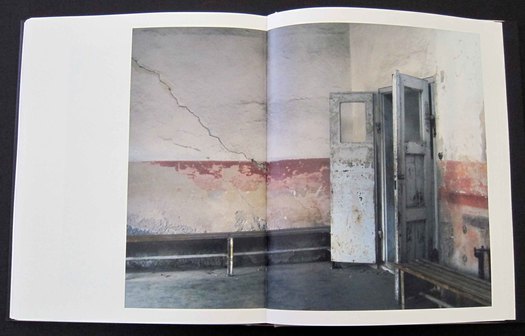
Daniel Blaufuks, Terezín, 2010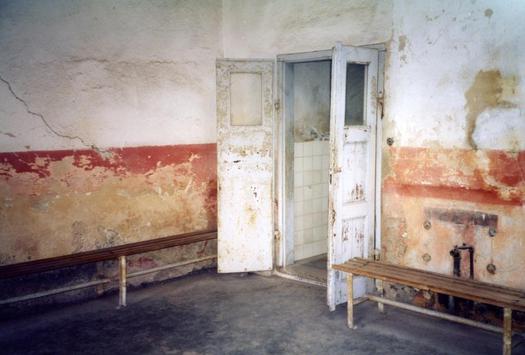
Rick Poynor, Small Fortress, Terezín, 2004
Not until the copyright page at the back of Terezín do we learn the source of Sebald’s mysterious picture of the room. Blaufuks discovered this shortly before the book went to press, in his publisher Steidl’s library, and says it completes a “perfect circle.” I could have kicked myself when I read in his brief note that the photograph appears in a section on Terezín in the late German photographer Dirk Reinartz’s Deathly Still: Pictures of Concentration Camps. In 1996, on a visit to Zurich, the book’s publisher invited me to take a book and I chose a copy of this brilliantly conceived and profoundly unsettling volume, based on photographs taken between 1987 and 1993. It had been a long time since I looked at Deathly Still, but that was where I had seen the picture. And, with Sebald studies now a small industry, at least one scholar has gone public with the source, in a footnote — not exactly a billboard, I grant you — in the study W.G. Sebald: Image, Archive, Modernity (2007).
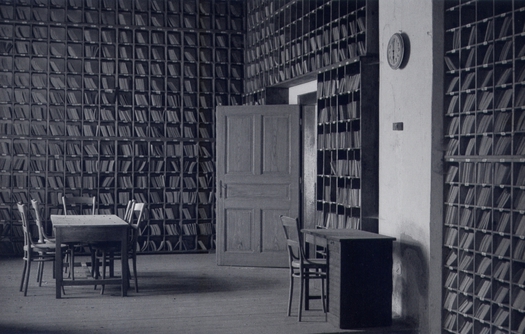
Dirk Reinartz, Small Fortress, Terezín from Deathly Still, Scalo, 1995
So the lugubrious artificer of hybrid fictions delivers another sleight of hand. What else would we expect?
